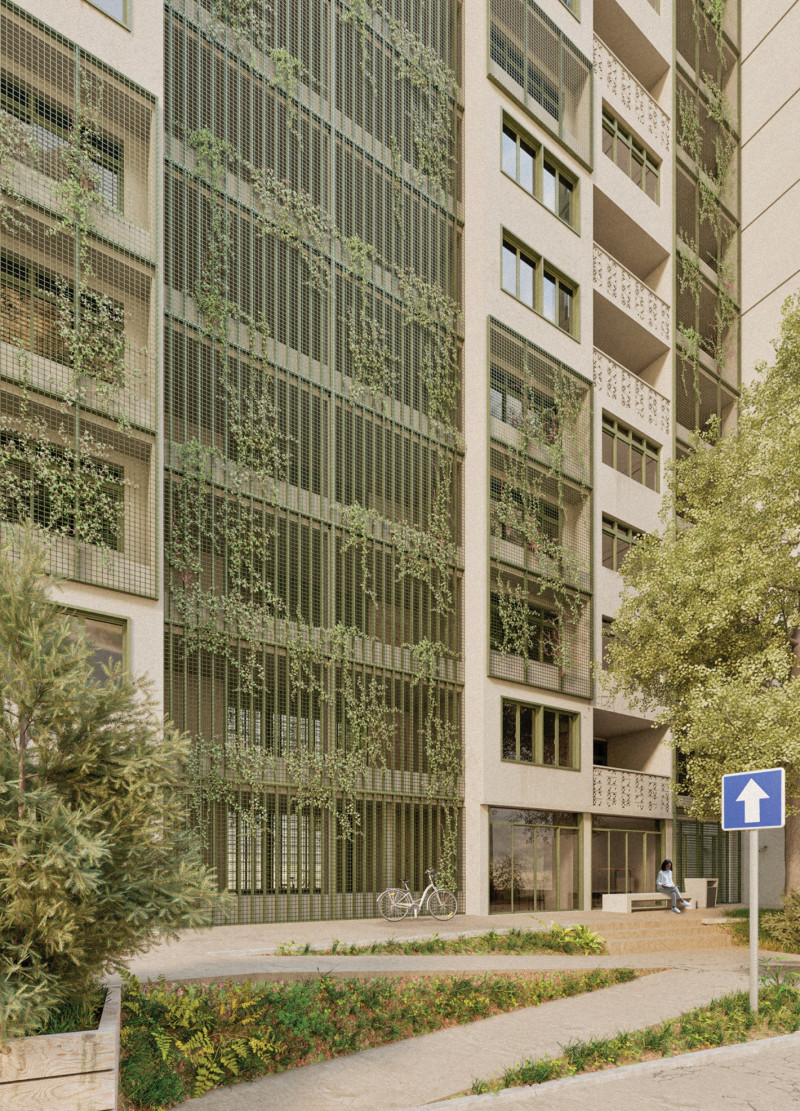5 key facts about this project
The primary function of the project is to serve as a multi-use facility, designed to accommodate various activities that enrich community life. Spaces within the building are not merely segregated; rather, they are interconnected, promoting interaction and collaboration among users. This approach reflects a contemporary understanding of architecture as a means of fostering community ties and enhancing social engagement. The design emphasizes versatility, allowing for a range of events and gatherings, from workshops to exhibitions, in a setting that adapts efficiently to changing requirements.
A defining aspect of this project is its unique design approach that prioritizes transparency and openness. Large, expansive windows facilitate ample natural light, creating a warm and inviting ambiance for the building's occupants. This emphasis on light not only contributes to energy efficiency but also establishes a connection between the interior spaces and the surrounding environment. The exterior façade, crafted from a combination of locally sourced timber and concrete, complements the natural surroundings while establishing a modern architectural language. The choice of materials contributes to the building's sustainability profile, ensuring that it integrates seamlessly into its urban context.
Key elements of the project include the integration of green spaces, which are strategically placed to enhance the user experience. These outdoor areas serve multiple purposes, functioning as both a visual extension of the interior spaces and as recreational zones for the community. Rooftop gardens and landscaped terraces are incorporated into the design, providing areas for relaxation while promoting biodiversity in the urban landscape. Additionally, these green roofs contribute to thermal regulation, aiding in the building's overall energy performance.
Architectural plans detail the careful spatial arrangement within the facility. The layout is designed to promote accessibility, with clear pathways guiding users through the various areas. Architectural sections illustrate the relationship between different floor levels, showcasing the verticality of spaces that encourages natural ventilation and airflow. This conscious planning enhances comfort for occupants while reducing the reliance on mechanical systems, aligning with modern sustainable design principles.
The architectural designs showcase a balance of private and communal areas, reflecting an understanding of the diverse needs of its users. Conference rooms and studios are equipped with state-of-the-art technology, enabling them to serve as dynamic environments for creativity and innovation. Concurrently, quieter spaces are included for contemplation and focused work, ensuring that various user needs are met without compromising the overall coherence of the design.
The project stands out due to its inclusive approach, inviting input from community members during the design phase, which has led to a building that truly reflects the desires and values of its users. Such an involvement fosters a sense of ownership among the community and promotes a deeper connection to the space.
Moreover, the architectural ideas employed here resonate with current trends that prioritize sustainability and resilience. The design incorporates energy-efficient systems, rainwater harvesting, and photovoltaic panels, ultimately aiming to minimize the ecological footprint of the building while setting a precedent for future projects.
For those interested in a deeper exploration of this architectural project, the architectural plans, sections, and design details provide further insight into the thought processes behind its creation. The unique elements of the design outline how the space not only fulfills its intended purpose but elevates the user experience within a responsive architectural framework. Visitors are encouraged to engage with the project presentation to better appreciate the comprehensive planning and innovative strategies that define this architectural undertaking.


 Diana Rokova,
Diana Rokova, 























